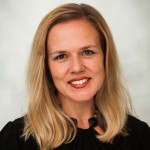Michael B. Horn and I teamed up last fall with the Charter School Growth Fund and Public Impact to conduct a market survey of blended-learning programs in the K-12 field. The white paper, “The Rise of K-12 Blended Learning,” which we published on Monday, is a summary of a more in-depth report that we plan to publish in the spring.
I intend to blog about several aspects of the paper to give further contour to our thinking. To begin, a few thoughts about the following definition of K-12 blended learning that we suggest at the beginning:
Blended learning is any time a student learns at least in part at a supervised brick-and-mortar location away from home and at least in part through online delivery with some element of student control over time, place, path, and/or pace.
We spent considerable time developing this definition. For one thing, we were motivated to provide a strong definition because of the widespread confusion in the field. One state-level online program I interviewed used “blended learning” to refer to the blending of videoconferencing with online learning. Another program called its program blended merely because its traditional, face-to-face teachers printed out material from digital textbooks to distribute to their students.
The more common understanding of blended learning, and the one we used as our starting point, was that blended learning involves a combination of online learning with an element of face-to-face.
We went with that definition, but refined it as follows:
First, we noted that blended learning involves online learning with at least some element of student control over time, place, path, and/or pace. We did this to exclude examples where the teacher uses an electronic white board with online curriculum to lecture to a classroom of students or instances where students use online textbooks instead of hardcopy ones. In both examples, teachers are using digital resources, but it’s still a traditional set-up, not blended learning.
Second, we omitted language about “face-to-face” and instead said that blended learning means the student is learning at least in part at a supervised brick-and-mortar location away from home. We did this because many schools are blending online learning into their onsite programming but using paraprofessionals or facilitators as the face-to-face supervisors. The brick-and-mortar programs still meet the eyeball test for blended, even though the certified teacher is online, not onsite.
Third, we steered clear of language such as “blended learning combines the best of online learning with the best of face to face.” As we state in the paper, “blended learning can be both good and bad. Some blended-learning programs save money; others are more expensive. Some blended-learning programs produce stellar results; others do not.” Inserting a normative qualifier in the definition erroneously narrows the term.
Finally, readers may be interested in thinking about the following scenarios that our definition of blended learning precludes:
1) Online learning, but no brick-and-mortar (That’s a full-time virtual school, cyber school or e-school; not blended learning.)
2) Brick-and-mortar, but no online learning (That’s a traditional school; not blended learning.)
3) No online learning, no brick-and-mortar (That’s a correspondence course; not blended learning.)
4) Online learning in a brick-and-mortar location, but not supervised (That’s a student learning online at Starbucks; not blended learning.)
5) Online learning in a brick-and-mortar location, but not away from home (That’s home schooling; not blended learning.)
I’m hopeful that as we take steps towards more precise definitions, the education sector will discover a greater ability to communicate about various options, including blended learning.

